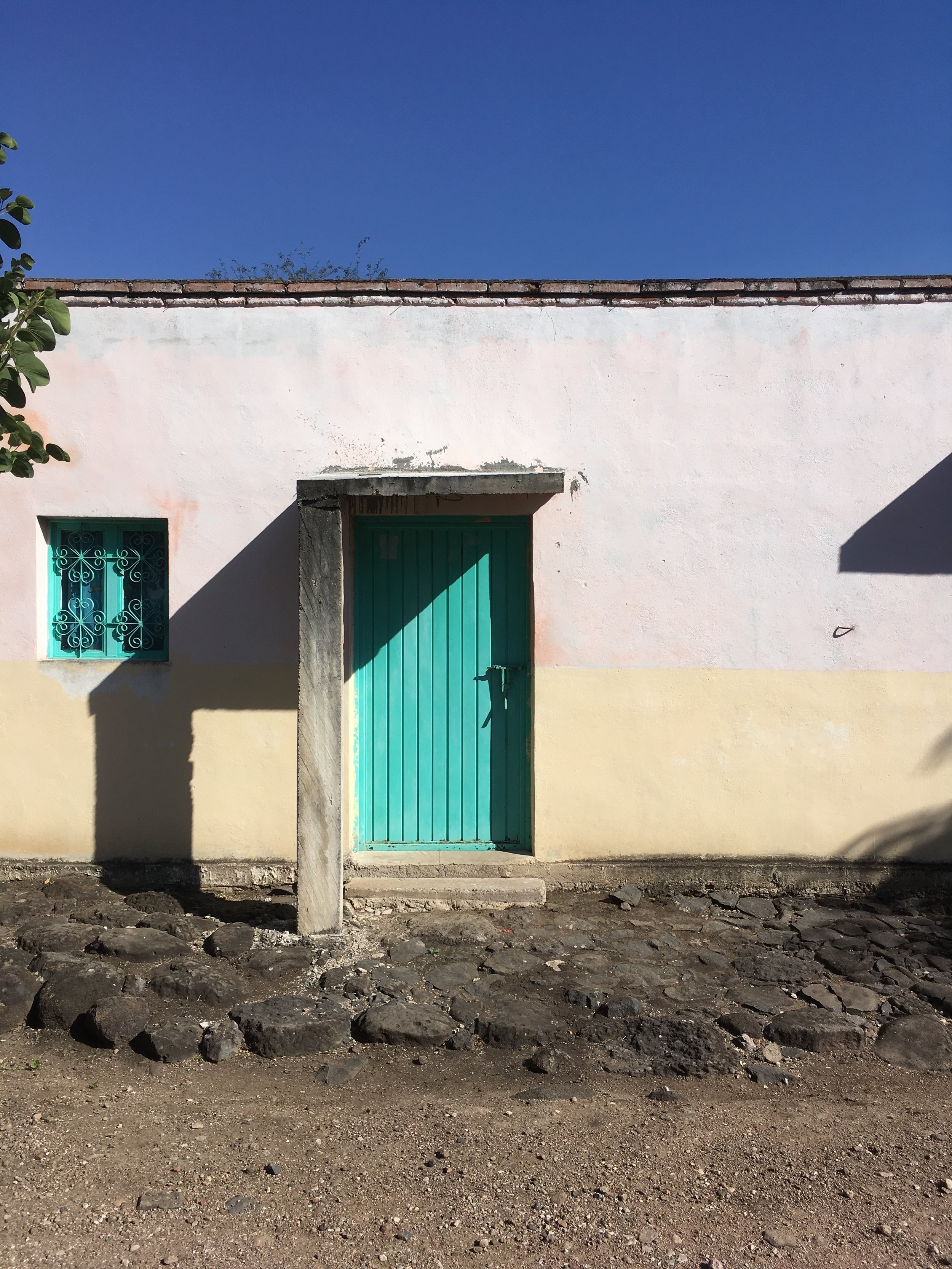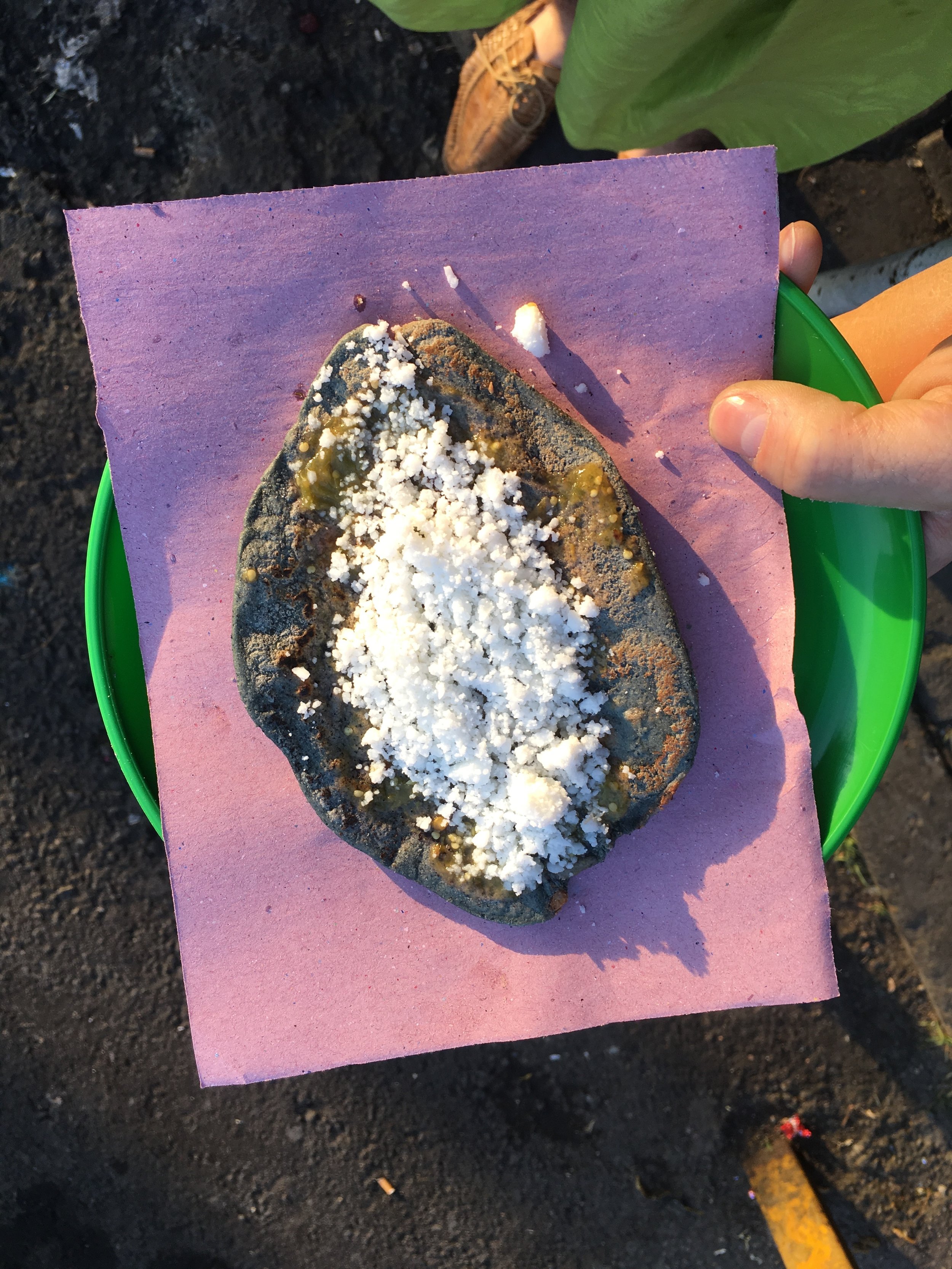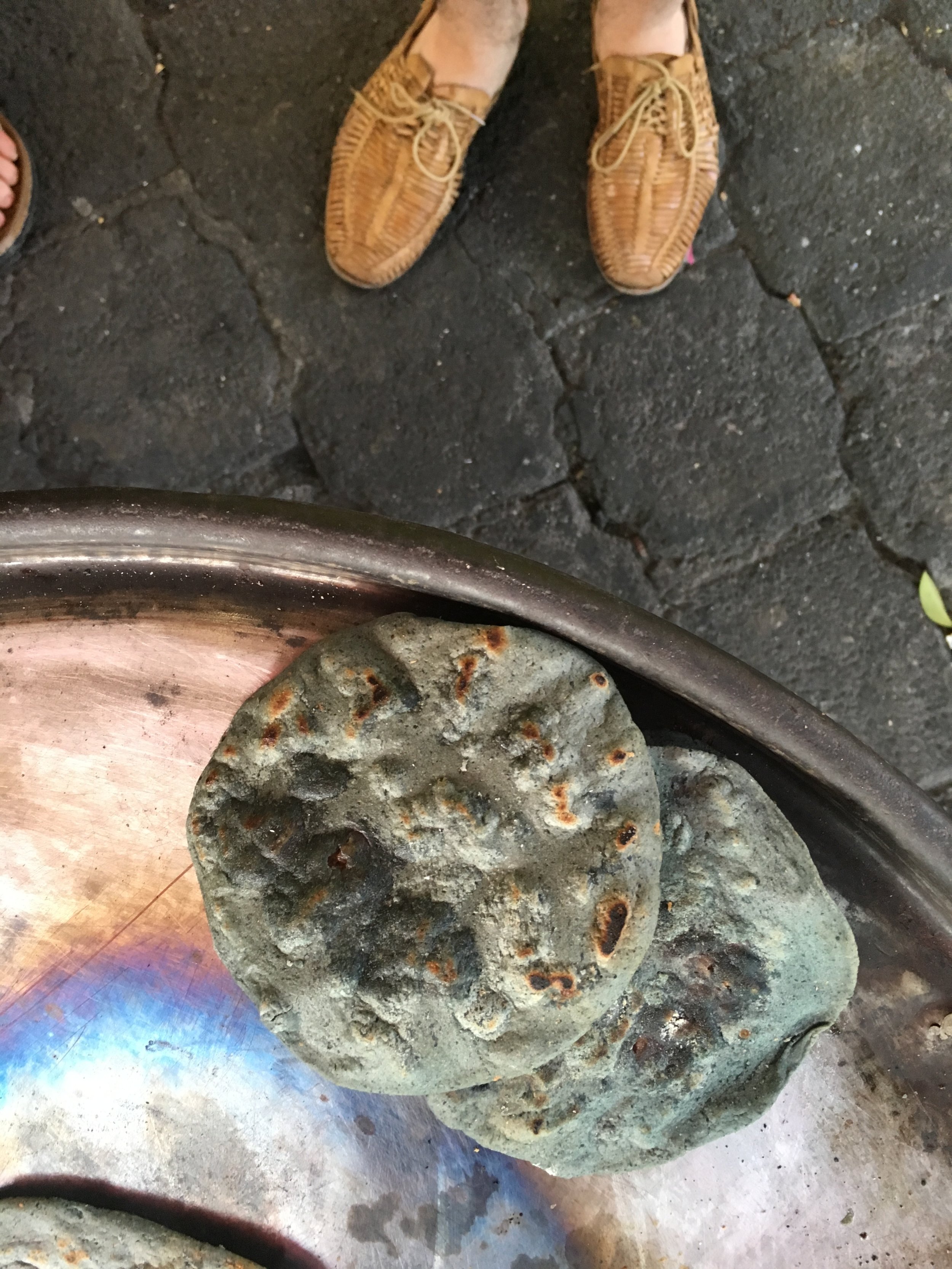I Got it from Mi Mamá
Photos and words by Zach Ligas
I find myself in the Coyoacan market with barely a hundred words in my Spanish vocabulary.
These are the moments when my instinctual lust for all things delicious takes over and my senses are flooded with things I want to eat. Words seem superfluous to smells as a silent dialogue between my nose and that bubbling pot of corn begins. Everyone here is a specialist; a tiny stall containing years of experience cooking that one dish. A flimsy aluminum stand holds tradition and a reverence for craft amongst the dimly flickering coals.
Coming from the pressure cooker that is fine dining in New York City, it seems unlikely that one might find a truly transformative engagement with food scattered amongst these humble cooking rigs. I feel the hustle and competition as well. Everyone cooking in the market knows that just around the block there are a handful of other tamales vying to be the best.
One thing I can articulate is: I love elote, and gravitate towards any stall that might have it. A boiled or grilled ear of corn smothered in mayonnaise, cotija, and chili; it is a savory lollipop that somehow evokes childhood glee of a memory absent from my upstate New York, white suburban upbringing. I walked up to a woman with a massive pot of corn, fiddle with my pesos, and roughly ask for one of her ears of corn. She chooses an ear and presents it for my approval. She rotates the ear gently to make sure that every kernel is intact and that this is indeed the corn for me. It is the sort of dedication to selection akin to spotting the lobster diligently pacing in the tank; soon to be swimming in drawn butter, that is the lobster for me.
This reverence for produce is something I haven’t seen elsewhere. Corn reigns supreme in Mexico and it holds court at thousands of food stalls throughout the city. In the markets scattered throughout the city, one really isn’t allowed to choose one’s own produce, fingering, bruising, and almost inevitably dropping a fruit that has traveled miles and miles to get here. Instead, a vendor earnestly consults the buyer, inquiring for what purpose you need that avocado. Coming from a country of agricultural commodification, it is another reminder that the people of Mexico understand where their food comes from and that every fruit and vegetable has a different purpose. Some avocados are for guacamole and some are for stuffing with tuna salad.
Along with these curbside food revelations, there are also linen covered dining rooms stocked with polished silver where the service is slick but resonates with a warmth and attention difficult to find elsewhere. I found myself at Maximo Bistrot Local, led by Mexican chef Eduardo Garcia who cooks with his feet firmly planted in Mexico while allowing his training at Le Bernardin to guide his execution. While the immature ears of corn were stunning, it was the almost instantaneous hospitality occurring in an almost acrobatic fashion that left me truly changed. We were seated on the patio, a stone’s throw from the plastic stools and paper napkins we had grown so fond of. Next to us was an American couple, they had been detected immediately and given a version of tonight’s offering printed in English.
Midway through our meal, the woman adjacent our table fainted, perhaps from the 3,000 meter altitude or maybe she was just really into that baby corn too. In an almost premeditated way, as soon as I had blinked, there were two servers with a first aid kit kneeling with her on the sidewalk, a cool towel and a glass of water. There was no shuffle, no fear, just immediate attention and care. When she had gathered herself and settled back into her chair, she took a few sips of her cocktail only to determine that perhaps it was time to go home. Her husband asked for the check only to be told that there was no bill and they hoped the couple would return in better health. Finally, with a the same hushed urgency, chef removed himself from the line, pushing aside a row of tickets and holding fires to make sure that he could hail them a cab and escort them to it personally.
It is this distinction between merely ‘being nice’ and caring that is so well understood in Mexico. It is not enough to grit your teeth and grab a cup of ice for the impatient guest’s Chardonnay, or smile through a litany of substitution requests. The heart of hospitality comes from putting your ego aside, and being aware that these people are in your hands for a few hours and it is your job to keep them smiling, safe, and full of delicious things.
After our time in Mexico City we headed to the village where my boyfriend was raised, El Organo. Four-hundred kilometers away in the state of San Luis Potosi, it took an overnight bus and a long cab ride to reach its remote beauty. It is a small village that feels preserved in its simplicity. The stillness is punctuated by pastoral moos and crows. It is five a.m. when a stereo system nearby is fired up and we are jostled from sleep and reminded that it is 2017 and we are not ranchers.
“Someone is having a birthday party today.” The music is played loudly so everyone in the village knows very well that there will be a party later, and if you can hear even the drones of the bass, you’re invited. This openness of hospitality is altogether foreign for a New Yorker, where guest lists, dress codes, and invitations rule one’s social viability. Here, the entire village is welcomed, fed, and entertained. The Coca-Cola is cold and sugary, the mole is what everyone has been looking forward to, and the party will truly lift off once the band hooks up the amps.
A slippery tortilla drenched in the thick mole decides to wreak havoc on an aunt’s white dress, the record screech in this moment of revelry.
“Pa’ que sepan que si fui a la fiesta!” So that they know I went to the party. A wry smile and all is right again.
There is an ease of entertaining here that fuels community. A Styrofoam cafeteria tray of chicken and rice serves as a platform on which families can grow, flirtations can run rampant, and family secrets can be explained. As long as there is food, the party goes on.
The next morning, the music is subdued, the streamers swept up, but the energy from the day before seems to cling to skeletal trees. After three more buses we are in Real de Catorce, further north in San Luis Potosi. An ethereal ghost town steeped in the history of the Huichol people. The final destination of our time in Mexico, meant to culminate in a pilgrimage to a sacred cactus. Arriving after nightfall, we befriend a woman named Laura, a local hippie-type who graciously acclimates us to this special place. In the morning, we are off in search of the foods that express the arid purity of Real.
Cacti run amok and can be found in everything from neon green ointments to sweet and medicinal drinks. Aguamiel, the sap of the maguey plant tastes something like if Christina Tosi’s cereal milk had a baby with coconut water. It is sweet, cloudy and has a reminiscent corn flake quality. This amber juice goes down a bit easier than it’s fermented brother pulque, a hazy milk-colored drink that is nearly indescribable. It tastes like pulque. Slightly fizzy and vaguely sexual in texture, the drink is bittersweet, feeling simultaneously healthful and intoxicating. With a few odd drinks under our belt, it was time for some food, my eye intrinsically drawn to a round metal disk used for making gorditas. We take a seat in the café to be approached by a waitress scarcely taller than the wicker backed chairs we leaned into. No older than nine, this girl was ready to take our order. Notepad at the ready, pen raised. This very little girl, with a brigade of matriarchal figures behind her, was running the floor. Swiftly bussing tables, collecting tips and returning the dining room to its rightful order, wishing each guest provecho as their meals landed tableside. It was from watching this girl, one not yet through grade school, that I could see the development of Mexican hospitality with incredible clarity.
The restaurants and food stalls in Mexico are filled with talents that have been coaxed and built upon for years. The instinct of how to take care of others is tapped into as soon as you can hold a pen in your mom’s restaurant and the minute you can take a tray of food out to a backyard full of neighbors. The hospitality in Mexico stems from a place of simplicity. There is certain pride to creating the food that the people have been eating since there was corn springing from the earth. There is something ingrained in the way Mexicans entertain that celebrates abundance even amidst a lack of resources. The beauty of this upbringing shines through with purity to the food on your plate and the way you feel leaving a place. Other guests soothed with tortillas and pozole, laced with bright epazote wish each other a good meal. A genuine interest that all eat well and enjoy themselves is paramount. That stranger next to you deserves all the best and all you can hope for is that they too, are full.





